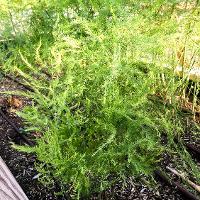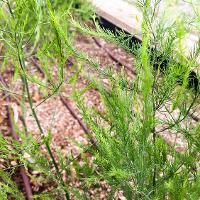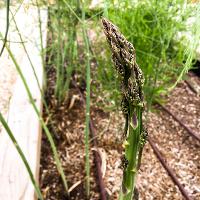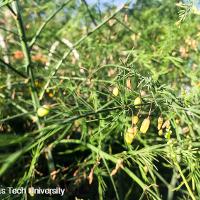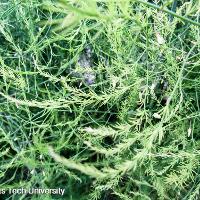Asparagus
Asparagus officinalis
Fruits/Vegetables
Asparagus can be planted for its edible young stems (delicious when roasted with some olive oil, salt, pepper, and a sprinkling of Parmesan) or for its very finely-textured foliage, which adds a fascinating depth of background to mixed plantings.
(Detailed plant information can be found at the bottom of the page.)

Asparagus officinalis Photo Gallery
Asparagus officinalis Plant Information
| Classification | |
|---|---|
| Scientific Name: | Asparagus officinalis |
| Common Name: | asparagus |
| Family: | Liliaceae |
| Suggested Uses: | perennials, beds & borders, herbs |
| Characteristics | |
| Plant Form: | upright |
| Height: | 3 - 6 feet |
| Spread: | 3 - 6 feet |
| Foliage: | linear, finely-textured, medium green foliage |
| Flower: | yellow, umbrella-shaped umbels |
| Environment | |
| Sun: | full sun |
| USDA Zone: | zones 4 - 9 |
| Additional Notes: | early, unbranched stems are edible, commercially available asparagus finely textured foliage interesting for arrangements or mixed planting beds |
TTU Plant Resources
-
Address
Texas Tech University, Department of Plant and Soil Science, Box 42122, Lubbock, TX 79409 -
Phone
806.742.2838 -
Email
Melanie.Jackson@ttu.edu

